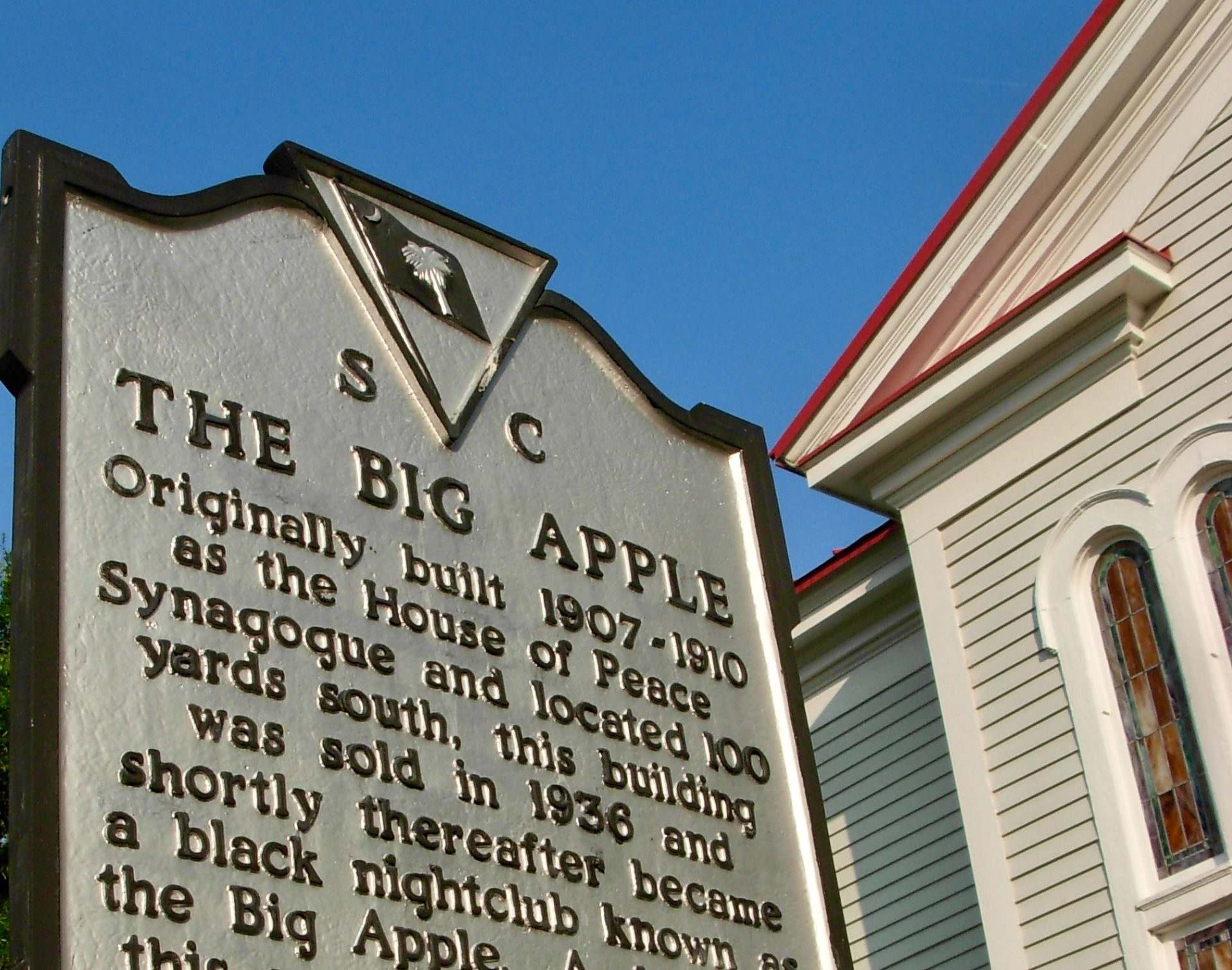|
Getting your Trinity Audio player ready...
|
The Palmetto State has been associated with plenty of dance crazes over the years. Flappers made the 1920s roar doing The Charleston. And who among us hasn’t lit up the floor at one time or another doing The Shag? (It’s the official state dance, incidentally, for those who keep track of such things).
But for downright silliness and sheer fun, few can hold a candle to another fad. Born in Columbia, S.C. in the most unlikely of places, it went on to take the country by storm. Then, almost as suddenly as it had arrived, it was gone.
Since it sprang from roots deep in the Southeast’s African-American experience, black history month seems an ideal time to revisit The Big Apple. And it all started at Fat Sam’s place on Park Street in downtown Columbia.
With Jim Crow laws in effect in the Deep South in the 1930s, entertainment was largely segregated. Blacks patronized certain establishments while whites went to others. In this divided environment, it was only natural that different diversions developed. So it was with Frank “Fat Sam” Boyd’s nightclub called The Big Apple.

***
The structure started as a synagogue. But after Columbia’s Jewish community outgrew it and built a new house of worship, lively music and dancing were making the rafters ring there by the mid-30s.
The festive atmosphere happened to catch the attention of three white University of South Carolina students one night. They heard music while driving by the club and decided to check out the place. Fat Sam, glad for the extra business, agreed … provided they sat in the balcony. The students dutifully handed over a quarter each cover charge (about $5.34 in today’s money) and eagerly took their seats upstairs. What they saw astonished them.
Dubbed The Big Apple after its birthplace, it was a circle dance done with partners that involved a frenetic outburst of activity. Think of it as “Sweatin’ to the Oldies” on steroids. Dancers moved around, jumped, waved their arms, clapped, and cavorted in a cross between Holy Roller camp meetings and calisthenics that must have consumed 10,000 calories or more.
Novelty always appeals to youth and the three white students were fascinated. They had found a new step – a new dance form, in fact – that perfectly captured the wild exuberance of being young. Those first inquisitive visitors returned with some friends, who soon were bringing their friends. The young whites were so mesmerized by the dance, they even threw coins from the balcony to encourage the dancers to keep going. Fat Sam had a bonafide hit on his hands.
(Click to view)
The white students – Billy Spivey, Donald Davis, and Harold “Goo-Goo” Wiles – began imitating the new dance as best they could, which they dubbed ‘The Big Apple’ in honor of the nightclub. By the summer of 1937, it was being danced at the Pavilion in Myrtle Beach. From there, news spread up the Atlantic coast. A talent scout came down to see it for himself, and when he returned home The Big Apple was officially introduced to the “Big Apple.”
A wave of Big Apple Mania swept across the country. Legendary dance teacher Arthur Murray began teaching it in his classes. “Bill Spivey’s Big Apple Dancers” packed in big crowds on a six-month national tour. The craze grew so hot, so fast Life magazine gave it a four-page spread that December and even declared 1937 would always be remembered as “the Year of the Big Apple.”
Things got spicy that same month when, during a live radio show comedy sketch about Adam and Eve in the Garden of Eden, notorious sex siren Mae West suggestively told the serpent to bring her some forbidden fruit: “Now, get me a big one. I feel like doing the Big Apple.” While the studio audience howled in laughter, the Federal Communications Commission wasn’t amused, blasting the bit as “vulgar and indecent.”
The Big Apple, both the dance and mentions of it, made appearances the next year in such Hollywood classics as Jimmy Stewart’s “You Can’t Take It With You,” Bob Hope’s “The Big Broadcast of 1938,” and the Ginger Rogers’ vehicle, “Vivacious Lady.”
Then, as suddenly as it had started, the craze was over. What was red hot in late 1937 had become passé by early 1940 as The Jitterbug and other new dances gained fame. That’s the thing about dance fads; they glow with the brightness of a shooting star and then all too quickly burn out. Seen anyone doing The Twist or The Hustle lately? But it was great fun while it lasted, and for one brief shining moment America was bonkers about a dance that began in downtown Columbia.
***
ABOUT THE AUTHOR…
J. Mark Powell is an award-winning former TV journalist, government communications veteran, and a political consultant. He is also an author and an avid Civil War enthusiast. Got a tip or a story idea for Mark? Email him at mark@fitsnews.com.
***
WANNA SOUND OFF?
Got something you’d like to say in response to one of our articles? Or an issue you’d like to address proactively? We have an open microphone policy! Submit your letter to the editor (or guest column) via email HERE. Got a tip for a story? CLICK HERE. Got a technical question or a glitch to report? CLICK HERE.
BANNER VIA: Scott Long/ Wikimedia Commons


